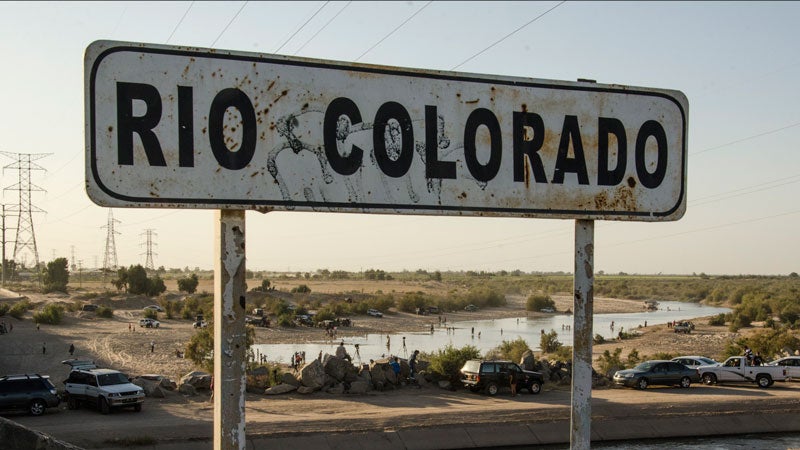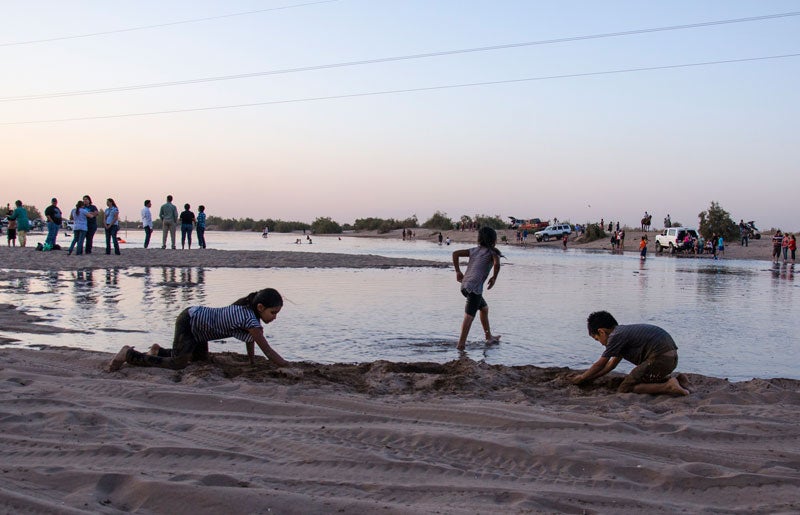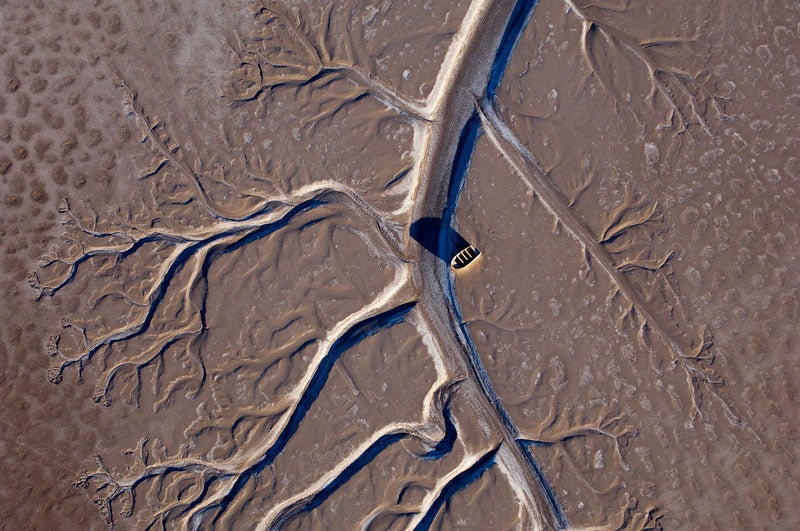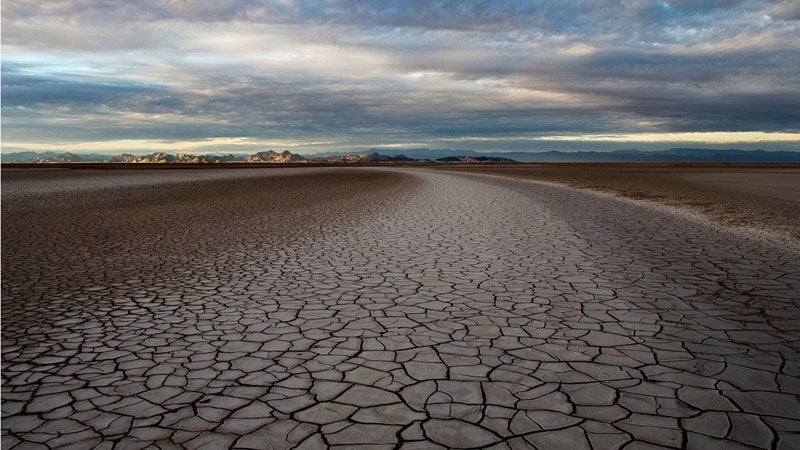Last Monday, in the town of San Luis R├şo Colorado, in the Mexican state of Sonora, hundreds of people gathered below a bridge that spans the dry channel of the Colorado River. The polka-beat of Ranchero music mixed with sound of laughter across the sandy basin. It was a party of all ages and everyone waited for the guest of honor: agua.
Raise
To help reconnect the Colorado River to the Sea of Cortez, go to. Raise the River is a project of the Redford Center, the Environmental Defense Fund, Pronatura Noreste, The National Fish and Wildlife Foundation, The Nature Conservancy, and The Sonoran Institute. Its goal is to raise awareness, funds, and ultimately, the water level of the Colorado River.Located 23 miles downstream of Morelos DamÔÇöthe last dam on the ColoradoÔÇöSan Luis is where the river finally leaves the border behind and journeys into mainland Mexico. From here, the riverbed winds 90 miles to the Sea of Cortez. But for nearly two decades, water has rarely escaped the sealed downstream gates of the dam. Instead, Mexico’s entire Colorado River allocation turns westÔÇödiverted into a giant, concrete irrigation canalÔÇöleaving a river of sand below.
But at 8 a.m. on Sunday, March 23, the red steel gates glided open, releasing the beginning of a 105,392-acre-foot “pulse flow”(an acre foot is roughly a football field one foot deep). This blast of moisture, designed by hydrologists to mimic a natural flood, will last eight weeks with a peak flow cresting today, March 27, until 30. An additional 52,000 acre-feet will be dispersed over a five-year period as a supplemental “base flow” to support sprouting vegetation. All said and done, this gush of liquid gold represents what many thought to be the unfathomableÔÇöan international partnership to bring a river back to life.
By Tuesday in San Luis, the party by the bridge had built momentum. The river was late, but no one seemed deterred. Two men in business suits walked the dry riverbed before me. I asked them why they braved the heat here on this sunny afternoon.
“We are here to see the water, of course. Do you know where it is?” they asked in Spanish.
“Arriba. Upstream I think. It should pass here soon, for a bit,” I speculate.
“Si, que bien, soon is good but we need to see it here permanently.” He smiled and they continued walking the sand, looking upstream.

By Wednesday afternoon, I returned to see the fiesta had quadrupled. And in the distance, 300 yards above the bridge, I saw why. Like nearly everyone passing by either in vehicles or by foot, I was stopped in my tracks. The agua had finally made its debut. Inch by patient inch, the river moved down its old dusty path toward the San Luis bridge. A sense of giddiness grew with every foot the water advanced. Families picnicked in the backs of trucks and on beach towels beneath shade tents; fireworks popped, kids splashed in the shallows, cowboys danced horses, and ATVs and dune buggies roared about, rooster-tailing sand into the afternoon light.
To see crowds celebrating the return of the riverÔÇöeven brieflyÔÇöleaves me marveling. When I first started chasing the Colorado, nobody spoke about water in the delta. That was six years ago, when I joined my friend Jon Waterman on a mission to . While Jon paddled every inch of the main course, I chased every bend in her path by foot, boat, and planeÔÇöanything to get me a unique perspective. For me it was personal. My family, like many, depends on the river’s flow to irrigate the hay crops on our cattle ranch upstream in central Colorado. I was curious to see firsthand what became of our irrigation water downstream; would it reach the sea?
For six million years, the river did, annually flooding its delta. That cycle, however, diminished starting in the 1960s and then stopped completely in the late 1990s. The growing demand for water across seven U.S. and two Mexican states finally surpassed the river’s over-allocated and drought-stricken supply. Today the Colorado is the lifeline for 36 million people and over four million acres of farmland. Without the Colorado, the West and most of the nation’s salad bowl wouldn’t exist.
This week’s rare flow is just a test to solve the decades-long issue of water shortage on the river. In 2012, after years of uphill work, officials agreed on an addendum, known as Minute 319, to . The agreement states that the United States and Mexico will share water surpluses and shortages until the end of 2017. It also mandates the experimental release of what it calls “water for the environment,” in a deal brokered by a coalition of NGOs, including , , , and the .

Don’t worry, California. The flow isn’t coming from your water budget. Technically, it’s made up of surplus Mexican water from previous years, which has been banked in Lake Mead (providing additional benefits like helping Vegas’ drinking supply). And in the grand scheme, the water allocation is punyÔÇöless than one percent of the river’s average annual flow.
For some, there is a concern that this flow will prove to be more symbolic than a true fix. Fred Philips, a habitat-restoration expert based in Yuma, Arizona, is moved that this section of river, “the most forgotten in the world,” is getting attention. For months, Phillips and scientists from Pronatura and the Sonoran Institute have been scurrying around the chapped delta, wedging saplings and planting seeds, holding their breaths to see if the vegetation recovers and if some of the delta’s 300,000 migrating birds return.
But Phillips worries that the hype will die with this week’s pulseÔÇôleaving many people’s hopes to dry up with the delta again. “They should use the minimum amount of water for the photo op,” he says, “and the maximum amount for habitat restoration.”
No matter what happens downstream, there is no denying one thing. Enthusiasm on both sides of the border is rising along with the water.

Yesterday I visited Morelos Dam. Most of the dam’s gates were flung wide open like windows, and a giant lazy lake stretched downstream. In six years of visiting here, I’ve never seen anything but a trickle of seepage flowing downstream. Five years ago, when Jon and I paddled that trickle, we made it only a few miles before we were marooned in a pit of frothy muck and garbageÔÇöforced to hoof the last 100 miles of delta shouldering our rafts and packs.
Tomorrow, ║┌┴¤│ď╣¤═° contributing editor Rowan Jacobsen and I will join a band of river biologists and restoration experts to see if we can actually paddle to the sea. It will be my third attempt. This time, I’m hopeful the crest of this historic pulse will float us across the delta. Walking is out of the question.
Peter McBride and Jonathan Waterman vividly showcase the Colorado River in


